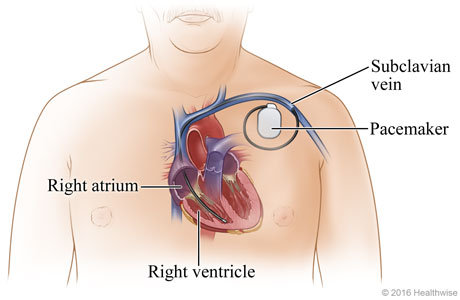
A pacemaker is a small, battery-powered device that sends out small electrical impulses to make the heart beat in a regular rhythm and at a normal speed. A pacemaker consists of a pulse generator and battery that create the electrical impulses. Most pacemakers have wires (leads) that transmit electricity to the heart. A pacemaker has one or more leads. A lead goes from the pacemaker through the subclavian vein and into a heart chamber, such as the right atrium or right ventricle. The end of the lead is in the heart chamber to stimulate the muscle.
A permanent pacemaker is typically placed under the skin of the chest. One type of permanent pacemaker is placed inside the heart. This type does not have leads.
Current as of: June 24, 2023
Author: Healthwise Staff
Clinical Review Board
All Healthwise education is reviewed by a team that includes physicians, nurses, advanced practitioners, registered dieticians, and other healthcare professionals.